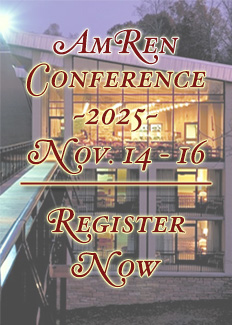Massacre at Sacred Ridge
Bruce Bower, Science News, November 6, 2010
Attackers with a deadly plan climbed a knoll to a Pueblo village called Sacred Ridge around 1,200 years ago. What happened next was anything but sacred.
At least 35 people, roughly half of those living in the village, were brutalized, killed and sliced into thousands of small pieces. Fellow Pueblo from nearby villages battered victims’ feet hard enough to break toes and fracture heels. Blows delivered with blunt weapons crushed the faces and heads of men, women and children. Scalps, and possibly eyes and ears, were removed, perhaps as trophies.
Wielders of sharp stone implements chopped up victims’ bodies in at least four Sacred Ridge structures. Attackers removed the roof of a large house and threw in heaps of human body parts, some of which had been fished from burning hearths. Several village dogs met the same fate.
{snip}
After leading an analysis of Sacred Ridge’s mutilated mass of bones, bioarchaeologist Ann Stodder of the Field Museum in Chicago has a controversial answer: genocide. An ethnically distinct Pueblo clan living at Sacred Ridge maintained tenuous authority over at least two other ethnic groups inhabiting Ridges Basin, Stodder contends. Dire food shortages and anger toward better-provisioned Sacred Ridge elites motivated a raid aimed at destroying an entire lineage and its collective identity, she proposed in April in Albuquerque at a meeting of the American Association of Physical Anthropologists.
{snip}
Potter [James Potter, the archaeologist who directed the excavations that uncovered this murder at Sacred Ridge], of SWCA Environmental Consultants’ branch in Broomfield, Colo., calls what happened at Sacred Ridge a one-off outburst of “ethnocide,” not a village-to-village genocidal campaign. Some researchers suspect that attackers attributed misfortunes in home communities to witchcraft practiced at Sacred Ridge; physically obliterating victims would drive evil spirits out and make bodies useless to malevolent forces. Others contend that the intentions of those who attacked Sacred Ridge are difficult to divine from piles of smashed bones.
{snip}
Melting pot meltdown
{snip}
Similarly, early Pueblo sites elsewhere in the Four Corners region have revealed a few incidents of killing and possible cannibalism mainly involving just handfuls of people. And a cave in southeastern Utah yielded bones from at least 61 pre-Pueblo individuals who were beaten, mutilated and stabbed around 1,500 years ago, but the predominance of adult males among those victims suggests a warfare-related attack.
Though violent raids on Pueblo sites increased in size and frequency from 900 to 1300 (SN: 9/9/00, p. 164), with victims including men, women and children, Sacred Ridge was built during a relatively calm period and therefore seemed an unlikely venue for violence.
{snip}
Digs led by Potter in two Sacred Ridge pit houses in 2003 and 2004 uncovered clusters of broken and burned human bones. Chemical analyses identified blood residue on an ax, a jar and other artifacts found near the remains. The next year, thousands more pieces of bone turned up in another pit house that showed signs of having had its roof removed. Potter’s team recovered a total of 14,882 human bone fragments from people of all ages.
{snip}
Distinctive house styles, pottery designs, burial practices, tooth shapes and skull features demarcate at least three ethnic groups in the basin at that time, including one at Sacred Ridge, according to Potter.
{snip}
Increasingly cold and dry weather, dwindling game herds and crop yields, and surpluses of stored deer and elk meat confined to Sacred Ridge inflamed ethnic tensions, Potter posits. The regional melting pot boiled over when members of one group eliminated the Sacred Ridge clan in a ferocious attack, he suggests.
{snip}
{snip} Chacon [anthropologist Richard Chacon of Winthrop University] says, research at Sacred Ridge counters claims by some scholars that prehistoric Pueblo people never fought, instead living in harmony with nature and each other. “That stereotype robs Native American peoples of their humanity,” he says. “Every group I’ve worked with has a long history of violent conflicts.”
{snip}
















